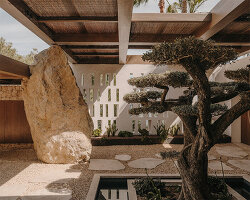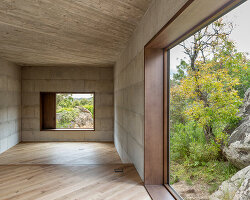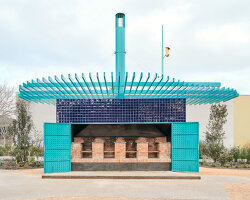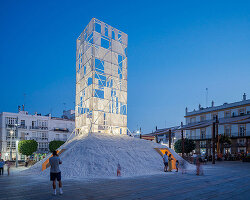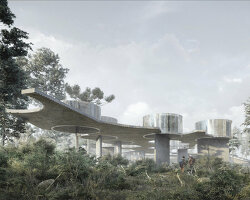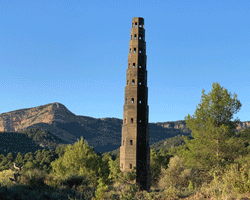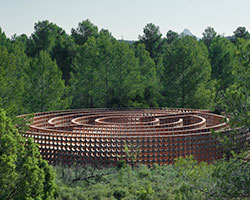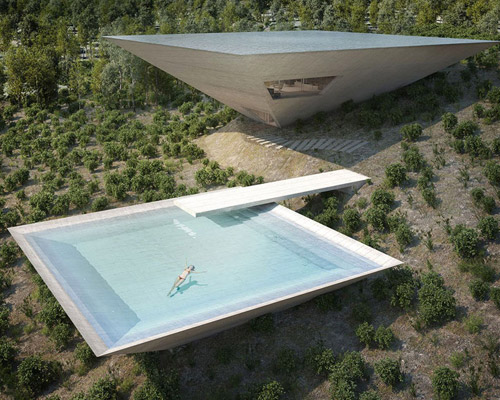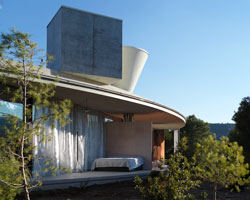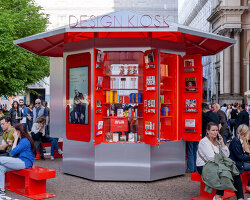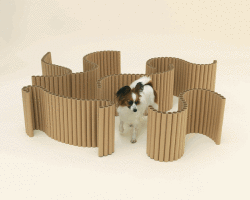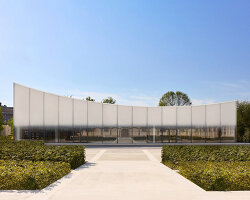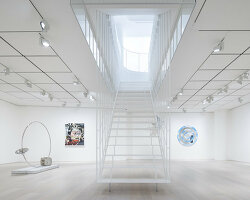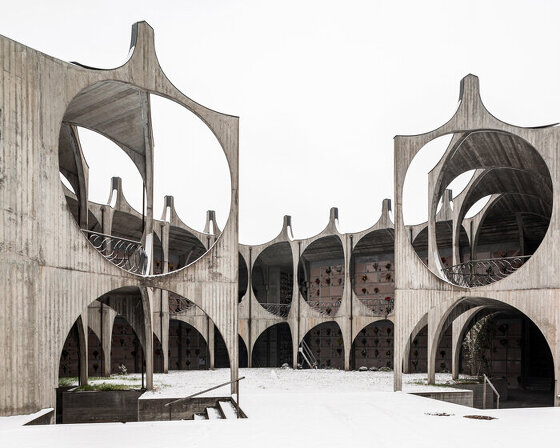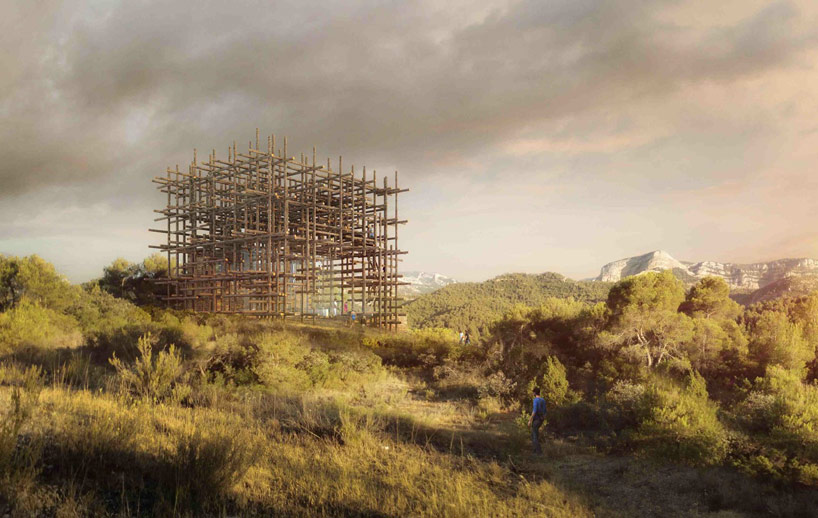
the solo house series includes portraits of 21st century needs and state of mind captured through buildable housing concepts designed by some of the world’s most notable studios. they represent a certain marker for the current state of residential architecture, not as a benchmark depicting the general state of housing but as an embodiment of the residential zeitgeist manifested as a functioning house. we take a closer look at the entry by japanese architect sou fujimoto, who has managed to stir up quite a reputation for himself in the architectural world.
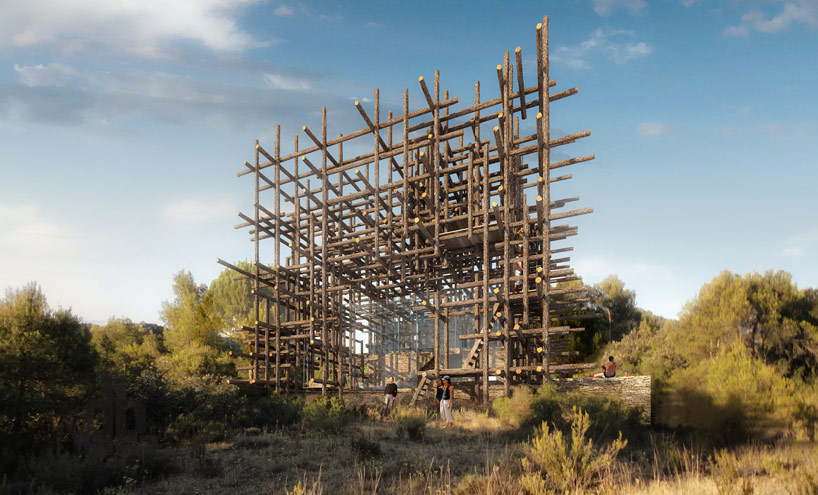
image © by-encore.com / all images courtesy of solo house
his ‘geometric forest’ is comprised of an irregular three dimensional latticework of untreated timber members that allow the free passage of views, ventilation and circulation while setting up a rigid form-work structure that can sustain a functioning program. in this scenario, not only are the crisscrossing members useful as a tangible building component but the resultant interstitial spaces as well hold a tremendous potential to be used as anything from life’s quotidian needs — such as shelving — to much more significant programmatic modifications like expansion or relocation within the gridded matrix. allowing the primitive elements of nature to create the foundation of the project – wood, air, and light – the ensuing spatial orchestration provides a contemporary interpretation of ‘home’.
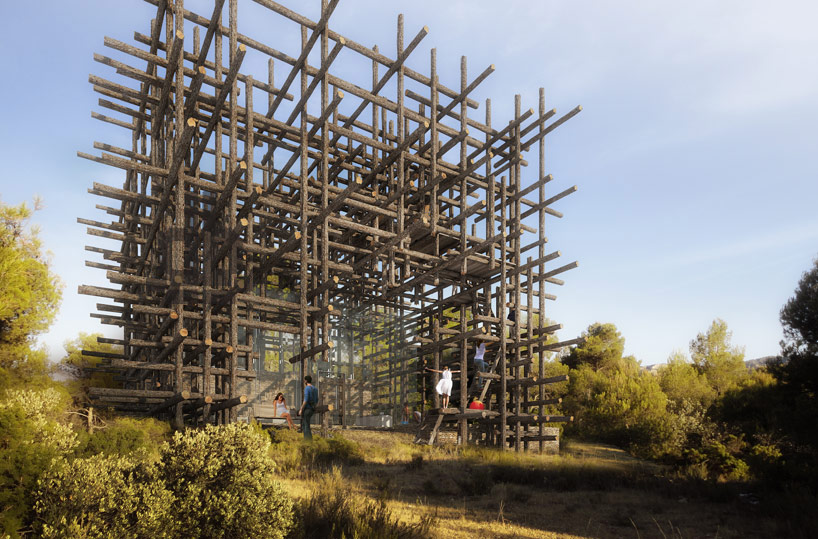
image © by-encore.com
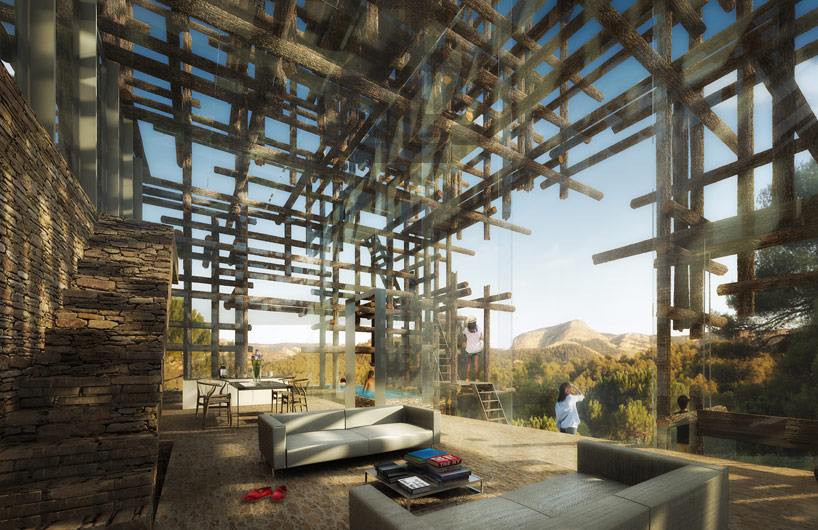
image © by-encore.com
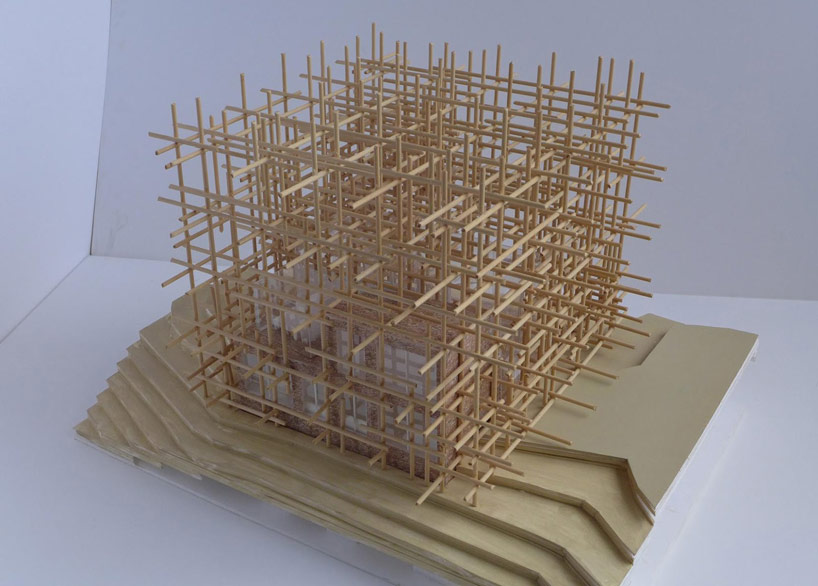
model

concept sketches

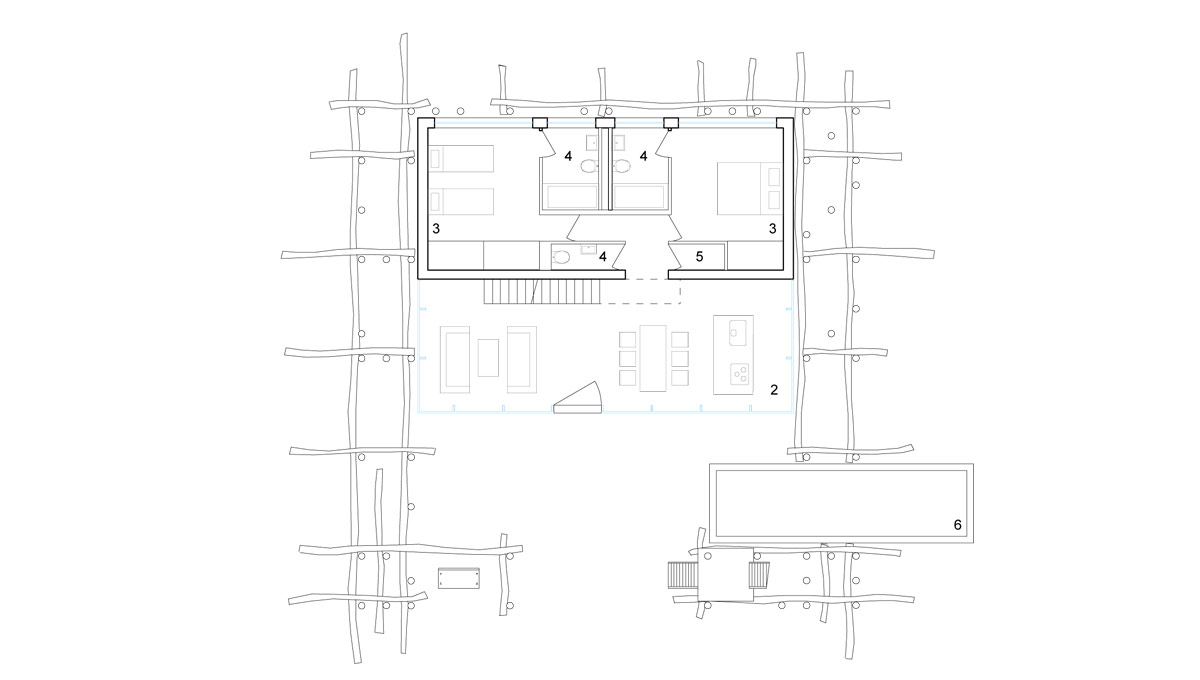








project info:
location: poligono 13, parcelle n°239, cretas, matarraña, espagne
area: 2,53 hectares
architect: sou fujimoto
associated architect: diogo porto
collaborator: sacha fabre
developer: solo houses spain sl – christian bourdais
Save
